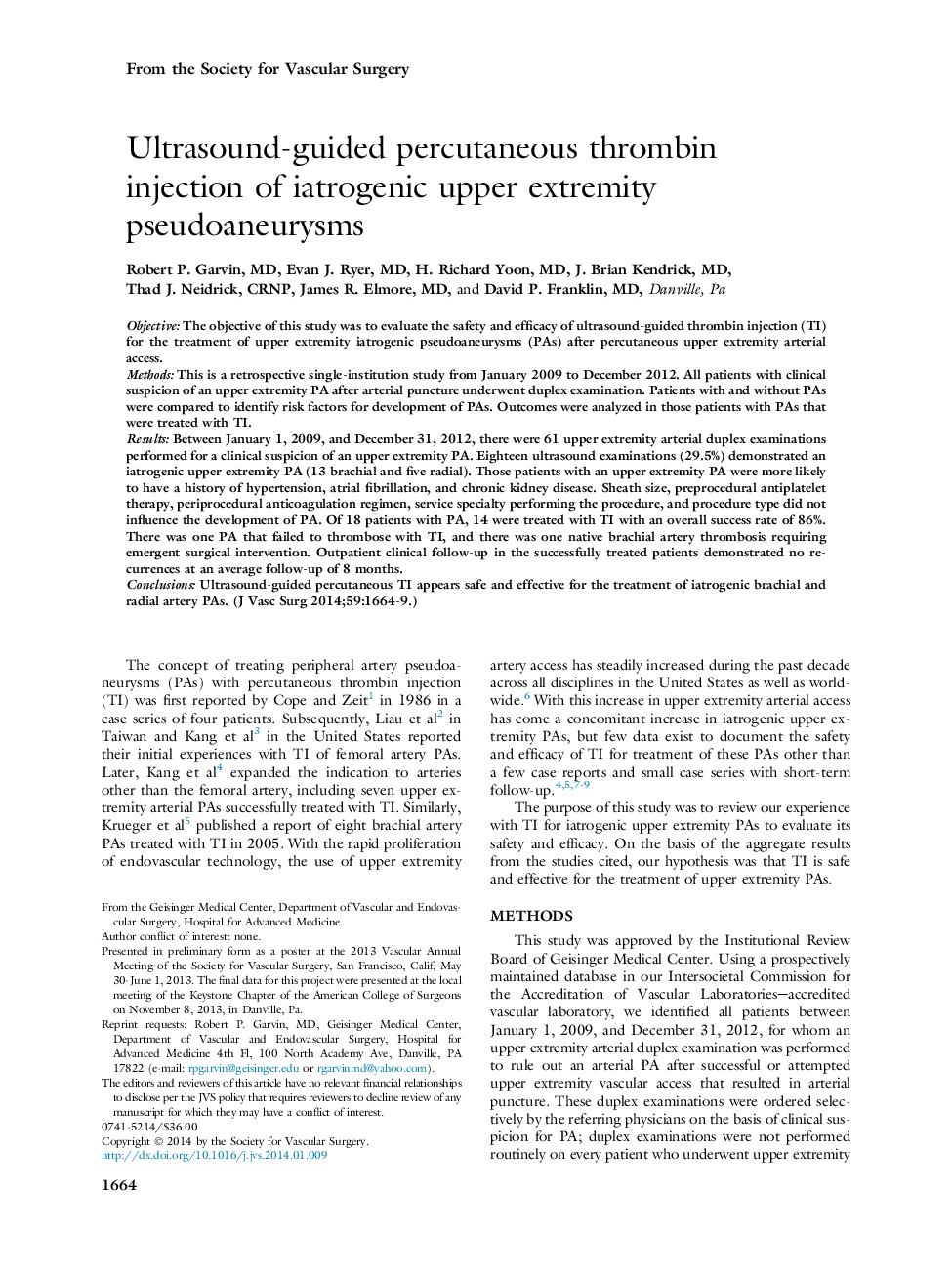| Article ID | Journal | Published Year | Pages | File Type |
|---|---|---|---|---|
| 5995522 | Journal of Vascular Surgery | 2014 | 6 Pages |
ObjectiveThe objective of this study was to evaluate the safety and efficacy of ultrasound-guided thrombin injection (TI) for the treatment of upper extremity iatrogenic pseudoaneurysms (PAs) after percutaneous upper extremity arterial access.MethodsThis is a retrospective single-institution study from January 2009 to December 2012. All patients with clinical suspicion of an upper extremity PA after arterial puncture underwent duplex examination. Patients with and without PAs were compared to identify risk factors for development of PAs. Outcomes were analyzed in those patients with PAs that were treated with TI.ResultsBetween January 1, 2009, and December 31, 2012, there were 61 upper extremity arterial duplex examinations performed for a clinical suspicion of an upper extremity PA. Eighteen ultrasound examinations (29.5%) demonstrated an iatrogenic upper extremity PA (13 brachial and five radial). Those patients with an upper extremity PA were more likely to have a history of hypertension, atrial fibrillation, and chronic kidney disease. Sheath size, preprocedural antiplatelet therapy, periprocedural anticoagulation regimen, service specialty performing the procedure, and procedure type did not influence the development of PA. Of 18 patients with PA, 14 were treated with TI with an overall success rate of 86%. There was one PA that failed to thrombose with TI, and there was one native brachial artery thrombosis requiring emergent surgical intervention. Outpatient clinical follow-up in the successfully treated patients demonstrated no recurrences at an average follow-up of 8Â months.ConclusionsUltrasound-guided percutaneous TI appears safe and effective for the treatment of iatrogenic brachial and radial artery PAs.
